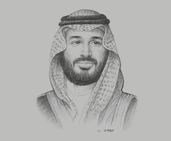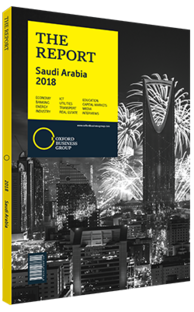Viewpoint from Crown Prince Mohammed bin Salman bin Abdulaziz Al Saud
 Crown Prince Mohammed bin Salman bin Abdulaziz Al Saud
Crown Prince Mohammed bin Salman bin Abdulaziz Al Saud Viewpoint: Mohammed bin Salman bin Abdulaziz Al Saud
Just a few months after the unveiling of Saudi Vision 2030, we began launching executive programmes with clear objectives and methods to achieve the vision. Many achievements have already been made, including a contribution to the treasury from the Public Investment Fund (PIF). We transferred SR100bn ($26.7bn) to the PIF and initiated a restructuring of its subsidiaries to maximise profitability and growth performance.
Saudi Aramco’s initial public offering (IPO) will provide large cash inflows to help the PIF target many sectors in and outside of Saudi Arabia. The first of these is the Saudi mining sector. According to a survey conducted in the 1970s and re-examined in 2016, Saudi Arabia has some $1.3trn in mining opportunities, with gold reserves around $240bn. A new sector such as mining can be difficult and costly for investors, thus the PIF will assume a pioneering role for new mining investments.
The second important target is the support of local content. Today, Saudi Arabia’s purchases of goods and services from abroad total up to $230bn. Vision 2030 aims to redirect half of this spending to inside the Kingdom. When we examine the major categories, we find that the military sector spend varies between $50bn and $70bn per year. The government has decided that any international purchases should be linked to a certain percentage of locally manufactured content. Companies that do not deal in highly sensitive technical content could agree to completely transfer to Saudi Arabia, such as those dealing in light weapons, ammunition or similar parts and industries. Industries with a medium level of technicality may be more sensitive, and we try to negotiate percentages of local content of 70%, 50% or 20%, depending on the deal. Finally, there are complex industries that countries will not transfer to Saudi Arabia. In this case, we ask for the main raw material to be sourced from Saudi Arabia. The second industry targeted for local content is automotive, with a total of $30bn spent annually. Of this, $13bn is spent by the Saudi government. Providing the government with Saudi-manufactured cars will result in 40-43% local content. We will not try to supply citizens with locally manufactured cars in the next 10 years, as it would be initially difficult to compete on price with international brands and convince the market of our quality. The third main sector for local content is entertainment and tourism, with $22bn spent abroad annually. This might be the most challenging sector to localise, as it is purely dependent upon individual decisions rather than government-linked spending. However, we are aiming to transfer 50% of this spending to Saudi Arabia by developing a greater number of local entertainment attractions throughout the country.
A third focus of the PIF is the logistics sector, where we are working on three primary opportunities. First, although the Red Sea captures 13% of world trade, Saudi Arabia does not contribute to servicing the route in any way. We have already started working with many countries to prepare a large-scale initiative in the industrial city of Jazan to capture this demand. Second, we are working to better connect Gulf exports to Europe, which receives 40% of the region’s total exports. Shipments currently travel from the Gulf to the Mediterranean Sea via the Strait of Hormuz, the Arabian Sea, the Bab Al Mandab Strait, the Red Sea and the Suez Canal. However, this route is long and expensive – not to mention risky. We want to provide a more secure and economic passageway through Saudi Arabia directly to the north of the Sinai peninsula via the King Salman Bridge that was announced last year. Aviation is the third major logistics opportunity. The UAE and Qatar have done a good job in the Middle Eastern aviation space despite the lack of a strong local market. However, Saudi Arabia has the largest domestic aviation market in the region and Saudi airlines should have a much larger stake in the Middle East today.
In summary, 50-70% of Aramco’s IPO revenue will be invested in mining, local content and logistics. The remaining 30-50% will go to promising sectors abroad.
You have reached the limit of premium articles you can view for free.
Choose from the options below to purchase print or digital editions of our Reports. You can also purchase a website subscription giving you unlimited access to all of our Reports online for 12 months.
If you have already purchased this Report or have a website subscription, please login to continue.

